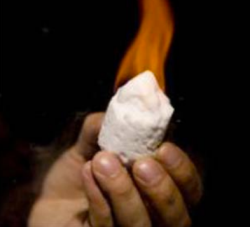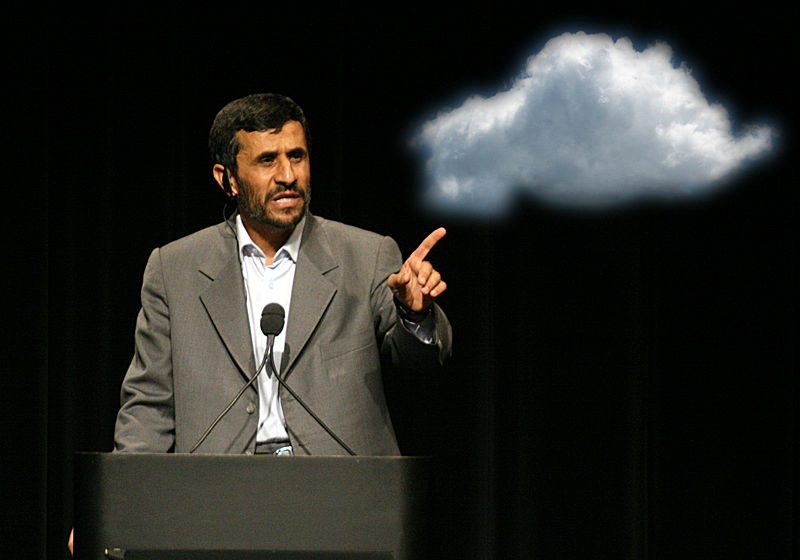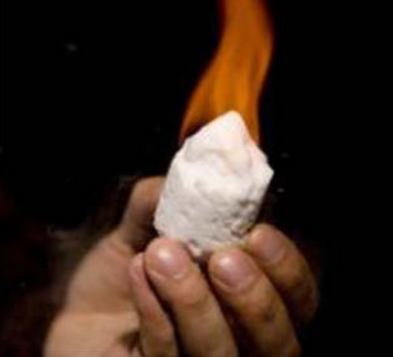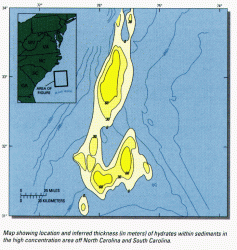An international team of scientists had a warning last week: A massive amount of methane trapped in Antarctic ice could be released into the atmosphere.
Which probably prompted some energy companies to think: We gotta get our hands on that.
Gas hydrates are crystalline gas (often methane) molecules surrounded by a “cage” of water in a solid that resembles ice. As it melts, the gas is released. According to the U.S. Geological Survey, methane hydrates are stable compounds in water at a depth of greater than 300 feet.
At right is a map of methane hydrate deposits located off the coast of South Carolina. Right there, just off our coast, all that methane, ready to burn. But who is going to invest in figuring out how to tap into these reserves?
Your rich Uncle Sam, that’s who. Late last month, the Department of Energy announced more than $5.5 million in investments granted primarily to universities for research into how the methane in these hydrates could be used.
[Fourteen newly funded research] projects build on the completion of a successful, unprecedented test earlier this year that was able to safely extract a steady flow of natural gas from methane hydrates on the North Slope of Alaska. …
“The Energy Department’s long term investments in shale gas research during the 70s and 80s helped pave the way for today’s boom in domestic natural gas production that is strengthening U.S. energy security while creating thousands of American jobs,” said Secretary [Steven] Chu. “While research on methane hydrates is still in the early stages, these research efforts as part of President Obama’s all-of-the-above energy strategy could potentially yield significant new supplies of natural gas and further expand U.S. energy supplies.”
Ah, yes. All-of-the-above. And under, and behind, and submerged. Election strategy as environmental albatross. No doubt the Republicans will stop this nefarious Obama administration plot once they realize that it’s an example of the government picking winners and losers in energy. And when they learn how socialist it is, what with government money going to benefit energy companies down the line, and so on.

If this looks like ice that’s on fire, there’s a good reason for that. (Image courtesy of the Department of Energy.)
If we’re actually able to extract the methane, what does that mean for energy production? William Pentland at Forbes explains.
The United States is almost literally swimming in the stuff. For example, a pair of relatively small areas roughly 200-miles off the coast of Charleston, South Carolina contain more than 1,300 trillion cubic feet of methane gas.
In 2008, the U.S. Geological Survey concluded that there are about 85 trillion cubic feet of undiscovered, technically recoverable gas resources within gas hydrates on Alaska’s North Slope. The research that extracted gas from hydrates in April relied on a technology developed by ConocoPhillips and the University of Norway, Bergen, which injects a mixture of carbon dioxide (CO2) and nitrogen into a hydrate formation to facilitate the flow of natural gas.
The Energy Information Administration already predicts that the U.S. will become a net natural gas exporter. If we start pulling all of this gas out of the seabed, it’s hard to predict the impact on the global economy.
It could be worse: Methane traps 20 times more atmospheric heat than carbon dioxide, making it an enormously potent greenhouse gas, but the impact of unfiltered release from the Antarctic is worse than extracting and burning it.
And it could be far, far better. With studies demonstrating that there’s enough power in the wind to meet the world’s needs, we could just leave the damn methane at the bottom of the ocean.
But then how’s ConocoPhillips gonna make a buck?




